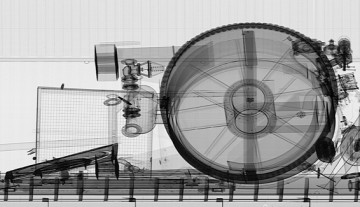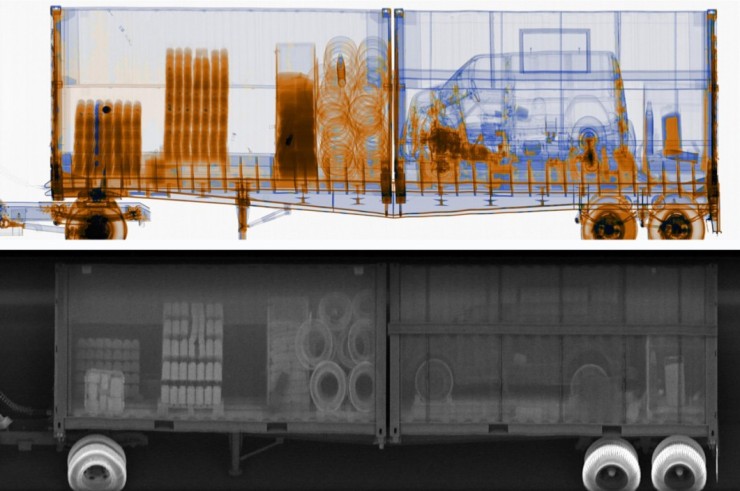
Transmission X-rays combine high energy with high performance for greater penetration and detection—even in dense cargo.
Transmission X-ray Technology
Transmission X-rays provide richly detailed information about the contents of a vehicle or container. For cargo systems, high-energy, high-performance transmission X-rays deeply penetrate densely loaded containers for greater detection.
How It Works
Systems from Rapiscan with transmission X-ray technology use electronically generated X-rays to examine an object. When X-rays interact with matter, they do one of three things:
- Pass through the object
- Get absorbed by the object
- Scatter from the object
Traditional transmission X-ray images like medical X-rays result when X-rays pass through an object to a detector located on the far side of the object. Objects with greater density block or absorb more X-rays than objects with lesser density. These dense objects produce the characteristic “shadowgram” images similar to medical X-rays. Transmission images are generally high-resolution and result from the X-ray beam being absorbed by objects of varying densities.

High-energy transmission image shows fine detail
High-Energy Transmission
High-energy transmission X-rays provide fine details, even while penetrating up to 400 mm of steel — and offer a reliable means of detecting threatening materials, weapons, and contraband hidden in cargo containers, tankers, and large vehicles. Z Backscatter® technology can complement transmission X-rays by providing context and clarity to expedite inspections and further visualize the shape and form of cargo contents for manifest verification and contraband detection.
Dual-Energy Transmission
Dual-energy transmission technology uses two X-ray energy levels to determine the atomic number of objects under examination, and then colorizes the image based on material type. Organic materials are orange, mixed materials are green, and metallics are blue.

Dual-energy transmission image colorizes the image based on material type
Combination of Technologies
Transmission technology can reveal fine details with superb resolution, and can offer some level of material discrimination with dual-energy. However, the more objects or clutter in the path of the beam, the less object and material differentiation is achieved. Because of this, many of our products offer a combination of transmission and Z Backscatter technology to give inspectors richly detailed information about the contents of a vehicle or container. Z Backscatter photo-like images complement transmission X-rays by providing context and clarity to expedite inspections.

Many of our products offer a combination of transmission and Z Backscatter imaging for richer information about the object under inspection

